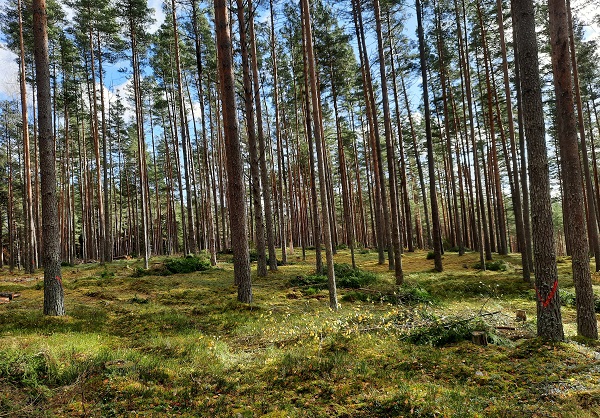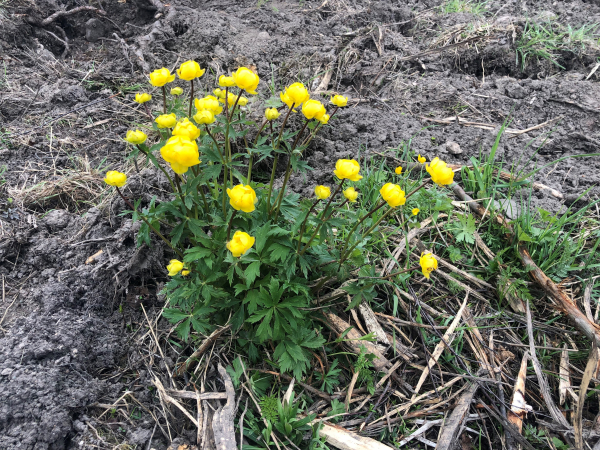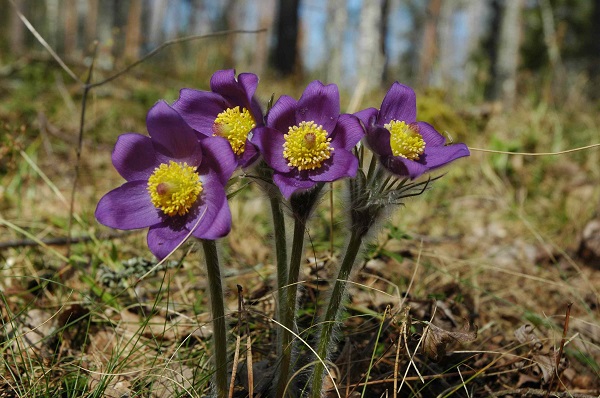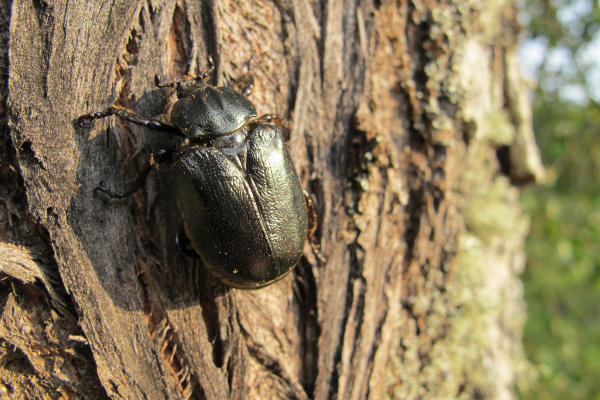The First Stage of Large-scale Restoration of Habitats and Species of EU Importance has been Completed
With the beginning of the nesting season, the first stage of works in the large-scale restoration and improvement of habitats of European Union importance and protected species has been completed. JSC “Latvia's State Forests” (LVM) carries out works on a total area of 778 hectares in 13 specially protected nature territories of European Union significance Natura 2000 and one micro-reserve in the possession of LVM.
“In all territories, the works are performed according to the plan; in the first stage, we have acquired 452 hectares out of 778. In many places, the course of works was influenced by weather conditions – for example, in January there was a 75 cm thick snow cover in Latgale, snow and ice remained on the slopes of the hills for a long time, and it was difficult to use the equipment on the slippery surfaces. The heavy snow also hindered the preparation of areas for undergrowth and bush cutting with brush cutters elsewhere in Latvia. Work in the grasslands will continue in the summer as well; the next intensive stage of works will resume in August, when the nesting time of the birds ends,” Ieva Rove, LVM Environmental Project Manager, talks about the progress of the project.
Natural grasslands are being restored
Within the framework of the project co-financed by the European Union Cohesion, in five specially protected territories – “Ziemeļu purvi”, “Augstroze”, “Melturu sils”, “Ziemeļgauja” and “Lubāna mitrāja” on Leigauņi Island – LVM is restoring natural grasslands, which are rapidly disappearing habitats both in Latvia and Europe. Natural grasslands are one of the components of the traditional Latvian rural landscape and cultural space and are also a habitat for many species of insects and birds that are associated with the environment rich in these plant species. To restore the natural grasslands, in all the target areas the first step of work was completed to remove fouling, to further level the ground – to mill the tree stumps. In the Kangari Meadows in the nature reserve “Ziemeļu purvi” in the part of the area of the renewable grassland, the milling works have already been completed and several indicator species of natural grasslands are already germinating, one of which is the European sunflower Trollius europaeus. To be able to restore and later maintain the grasslands, there had to be an adequate access to the nature reserve “Ziemeļu purvi”; therefore, at the beginning of this year, a wooden shield carriageway was laid, which is a safe and environmentally friendly solution. Milling of stumps has already started in the protected landscape area “Ziemeļgauja”, where extensive restoration works of park-like grasslands in an area of almost 100 hectares will be carried out. It is also planned to install a tree shield carriageway there to ensure convenient access.
Along with the restoration of grasslands, the habitats of the extremely rare beetle species – the hermit beetle – will be improved in “Ziemeļgauja”. Also, for the restoration of the natural meadow, fouling has been removed and the territory has been prepared for milling stumps in the nature reserve “Augstroze”. In total, the first restoration works of natural grasslands have now been carried out on a total area of almost 100 ha.
Habitats of rare and protected species are being improved
Significant works have also been carried out in several restoration areas of forest habitats and related species habitats in the regions of South Kurzeme, North Kurzeme, North Latgale, and West Vidzeme. Depending on the type of forest habitat and the ecological requirements of the characteristic protected species, appropriate management works have been performed. Two of the territories – “Numernes valnis” and “Driksna sils” in the LVM North Latgale region – are coniferous forests on glaciofluvial eskers. All rare and protected plants in forests on glaciofluvial eskers are light-intensive and sensitive to excessive nutrient accumulation. These plants bloom poorly in shaded areas and do not form seeds, are sensitive to shade from trees and shrubs and disappear in areas with dense herbaceous vegetation. Therefore, in the specially protected areas “Numernes valnis” and “Driksna sils”, felling of undergrowth and overgrowth, harvesting of the second-floor spruce, birch and other individual trees that cause strong shading, thinning of pines and cutting of unwanted trees and shrubs have been performed in a total area of more than 100 hectares. This way, the living conditions of the characteristic and protected plant species, such as the spreading pasqueflower, cowslip lungwort, northern dragonhead, sand pink and other species can be improved. Some of the rare species, such as the northern dragonhead, are extremely rare in Latvia.
In the micro-reserve “Meža silpurene”, to improve the habitat of the protected spreading pasqueflower, works such as thinning of pines and felling of undesired trees and shrubs in an area of 3.2 hectares and pruning of pines in an area of 3.6 hectares were performed, thus providing suitable conditions for the sun-demanding plant.
In the nature reserve “Sakas grīņi”, which consists of wet heaths and swampy forests, overgrowth, undergrowth, bush cutting and burning of 11 hectares were carried out to improve the habitat of the specially protected plant species called the cross-leaved heath, preserving intact the trees and other elements specified in the opinion of a certified nature expert. The cross-leaved heath is found in only a few places in Kurzeme in Latvia, and “Sakas grīņi” is another remaining habitat for the species.
In the LVM West Vidzeme region, the biologically old and large oaks of the nature reserve “Augstroze” are inhabited by a very rare beetle species – the hermit beetle, which is threatened by the decrease in the number of sunlit, hollow trees due to the overgrowth with park-like areas. To remove oak trunks and crowns and thus improve the habitat of the hermit beetle, the first stage of the Augstroze Peninsula was carried out by cutting down trees and shrubs in an area of eight hectares. Work on the peninsula will resume in August to complete the clean-up of the site. Restoration of grasslands is also being implemented in this area, which will significantly improve the landscape view from Augstroze Castle Mound.
Wooded seaside dunes are being diversified
One of Latvia's riches is the wooded seaside dunes found in the Seaside Lowlands. In many places, the “Ances purvi un meži” Nature Reserve almost completely lacks large-scale dead wood, which is particularly important for the long-term survival of a number of protected species, such as the longhorned beetle. Therefore, within the framework of the project, a forest stand in this area is being diversified by creating openings and concentrating and promoting dead wood in them, which diversifies ecological niches and expands the number of local micro-habitats in the target area. This provides a place to live for a more numerous and a more diverse community of species of different groups of organisms.
In the nature reserve, in the framework of the “Užava” project, felling of undergrowth and other undesirable trees and shrubs, burning and/or removal of felling residues were performed following the instructions of a knowledgeable nature expert. LVM works in the North Kurzeme region have been completed on a total area of almost 130 hectares.
“In order to evaluate the work done so far, LVM has performed an evaluation of the quality of work at each of the sites. At the end of the first stage of the works, we have evaluated the work done so far and set goals to be achieved for the next act of work,” says Ieva Rove. Also, on 17 May, a meeting of the project steering group was held, during which representatives of LVM and the project's leading partner – the Nature Protection Board met in person, not only to discuss the project, but also to evaluate the first results on site in the LVM nature reserve “Ziemeļu purvi” and in the Nature Protection Board territory “Randu pļavas”.
Works are carried out within the framework of the project co-financed by the EU Cohesion Fund “Implementation of management measures in specially protected nature territories and micro-reserves to improve the protection status of habitats and species” (No.5.4.3.0/20/I/001) and will take place until the end of 2023. The Nature Protection Board is the leading partner of the project.







